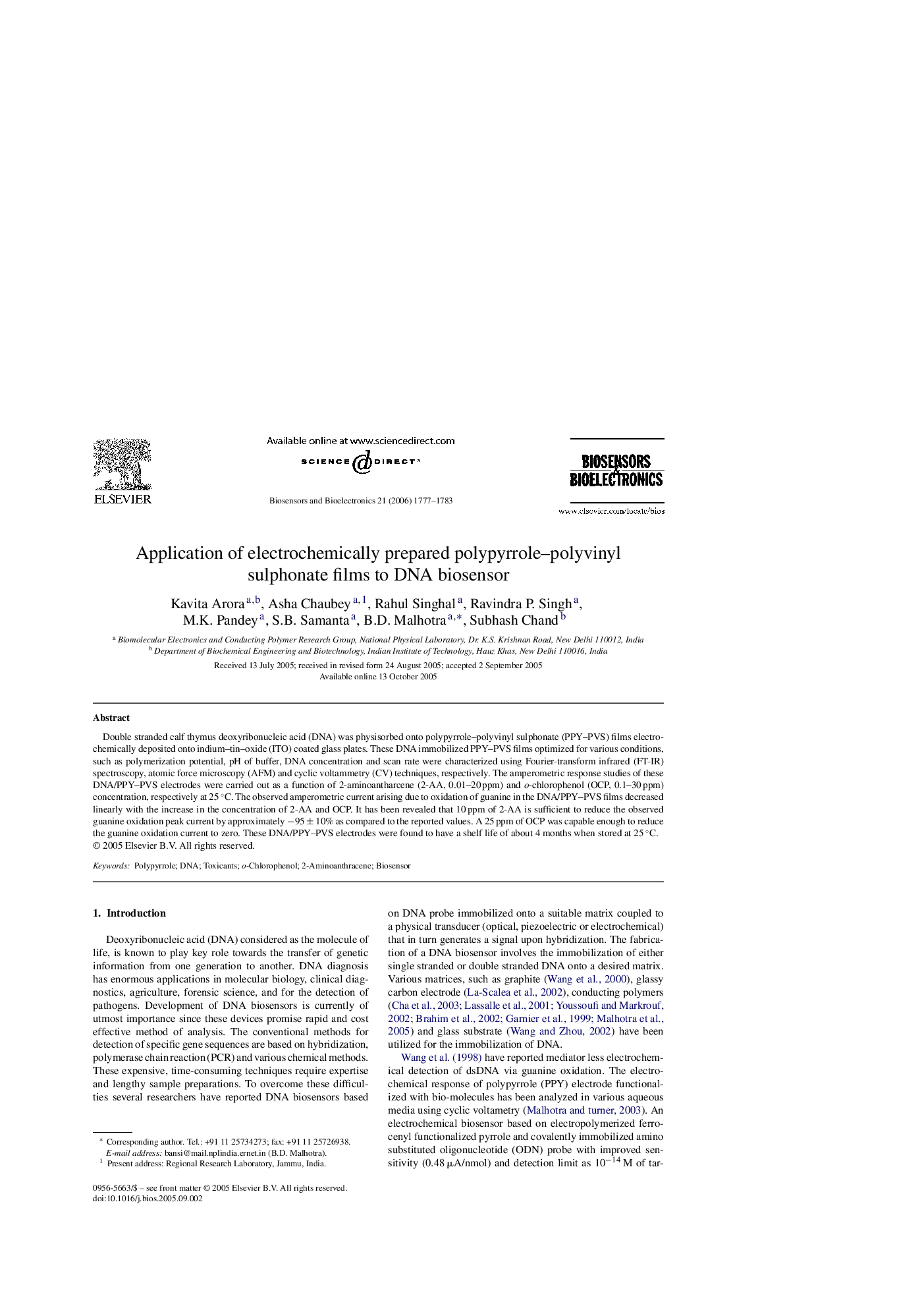| Article ID | Journal | Published Year | Pages | File Type |
|---|---|---|---|---|
| 869954 | Biosensors and Bioelectronics | 2006 | 7 Pages |
Double stranded calf thymus deoxyribonucleic acid (DNA) was physisorbed onto polypyrrole–polyvinyl sulphonate (PPY–PVS) films electrochemically deposited onto indium–tin–oxide (ITO) coated glass plates. These DNA immobilized PPY–PVS films optimized for various conditions, such as polymerization potential, pH of buffer, DNA concentration and scan rate were characterized using Fourier-transform infrared (FT-IR) spectroscopy, atomic force microscopy (AFM) and cyclic voltammetry (CV) techniques, respectively. The amperometric response studies of these DNA/PPY–PVS electrodes were carried out as a function of 2-aminoantharcene (2-AA, 0.01–20 ppm) and o-chlorophenol (OCP, 0.1–30 ppm) concentration, respectively at 25 °C. The observed amperometric current arising due to oxidation of guanine in the DNA/PPY–PVS films decreased linearly with the increase in the concentration of 2-AA and OCP. It has been revealed that 10 ppm of 2-AA is sufficient to reduce the observed guanine oxidation peak current by approximately −95 ± 10% as compared to the reported values. A 25 ppm of OCP was capable enough to reduce the guanine oxidation current to zero. These DNA/PPY–PVS electrodes were found to have a shelf life of about 4 months when stored at 25 °C.
